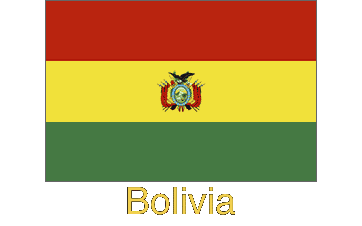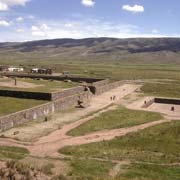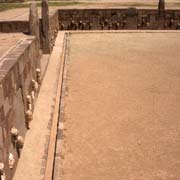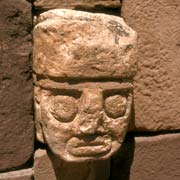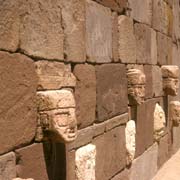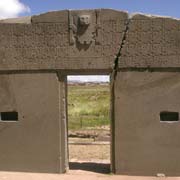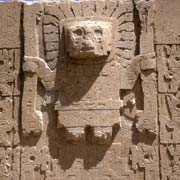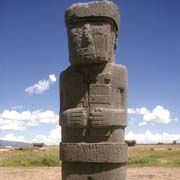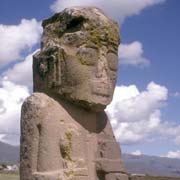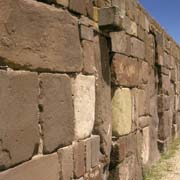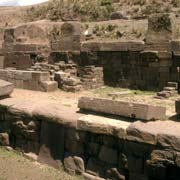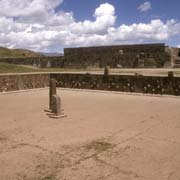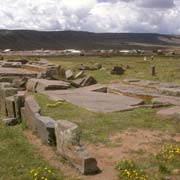Photos of Tiwanaku (Tiahuanaco), an ancient ceremonial centre, Bolivia
Tiwanaku (Tiahuanaco), an ancient ceremonial centre
Tiwanaku (or Tiahuanaco) is the centre of a Pre-Inca civilisation, started by Aymara people from the Lake Titicaca basin in Peru and Bolivia over 2,000 years ago. It is a mysterious ruined city of very ancient origins that arose about 600 BCE on the shores of Lake Titicaca; its waters are now about 20 kilometres away to the north.
you may then send it as a postcard if you wish.
Construction of the city and ceremonial site began around 700 CE and flourished for several centuries. At its height, it was home to 20,000 inhabitants and covered 2.6 square kilometres of land. It was built with massive blocks weighing up to 100 tons. The stones, fitted together without mortar, were cut, squared, dressed, and notched with a precision equalled in no other aboriginal South American civilisation, including the Inca. By the year 1000, Tiahuanaco culture had spread to Eastern Bolivia, Northern Chile and Peru. It flourished for about 200 years, then died when Lake Titicaca’s water level lowered, and the shoreline receded from the city. However, the culture lived on through its strong religious influence on the Incas.
Archaeologists have divided the history of Tiwanaku into five periods:
The advent of Tiahuanaco civilisation to mid-5th-century BCE. Finds from this period include multicoloured pottery and human or animal effigies made of painted clay.
5th-century - 1st century BCE. Artefacts include ceramic vessels with horizontal handles.
1-300 CE. Tricolor pottery in geometric designs, decorated with images of stylised animals.
The Classic Period, 300-700 CE. This period produced the large stone structures seen today, and the use of bronze and gold indicates trade contacts. Pottery includes human heads and faces with bulging cheeks, indicating the coca leaf was in use by this time.
The Expansive Period, 700-1200 CE. A period of decline, with less elaborate pottery and few construction projects.
The Incas later moved to the region and believed the city was built not by an earlier civilisation but by Viracocha himself. For the Incas, Tiahuanaco was where the first humans were created. It was the capital from which Viracocha reigned over the society. Since the arrival of the Spanish, the treasures of Tiahuanaco have been scattered all over the world. The Spanish looted its gold, and some artifacts were destroyed by Catholic zealots who considered these pagan idols. Other statues were kept by the church or sold by the church as curiosities. Larger stones were used for Spanish colonial construction projects, including the bed of the railway that passes near the site. Fortunately, some of the artwork made its way to museums, and a portion remains in Bolivia. The giant stone statues have been left on-site. At the same time, other artefacts can be seen at the on-site Museo Litico Monumental and the Museo National de Arqueologia in La Paz.


